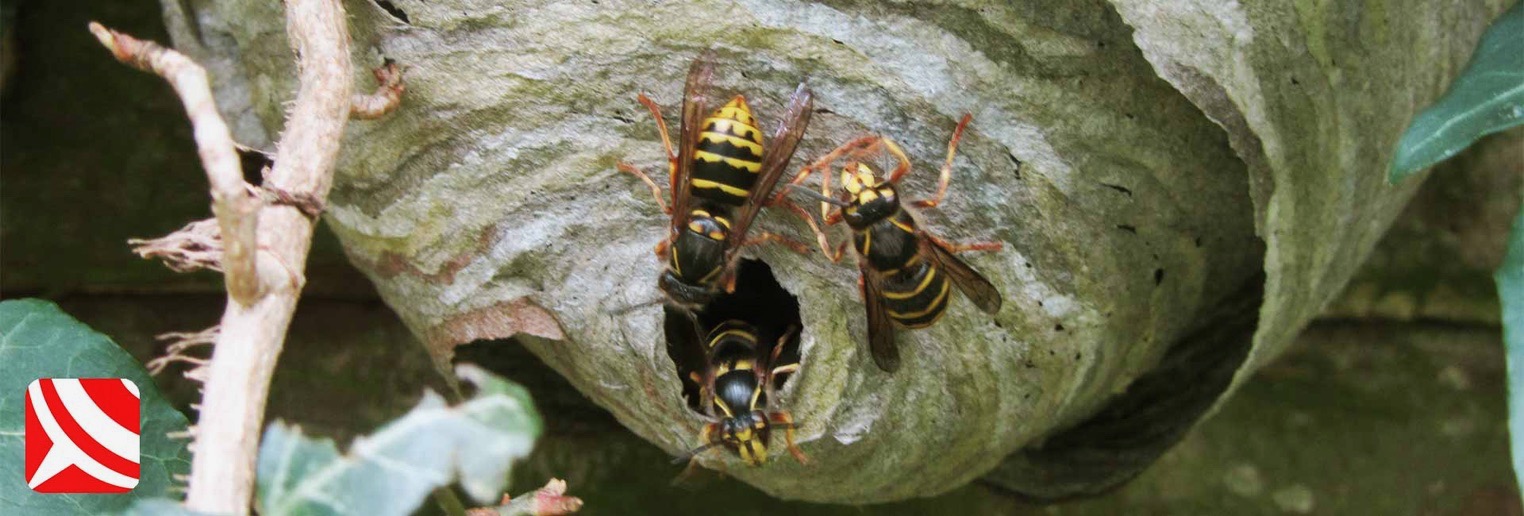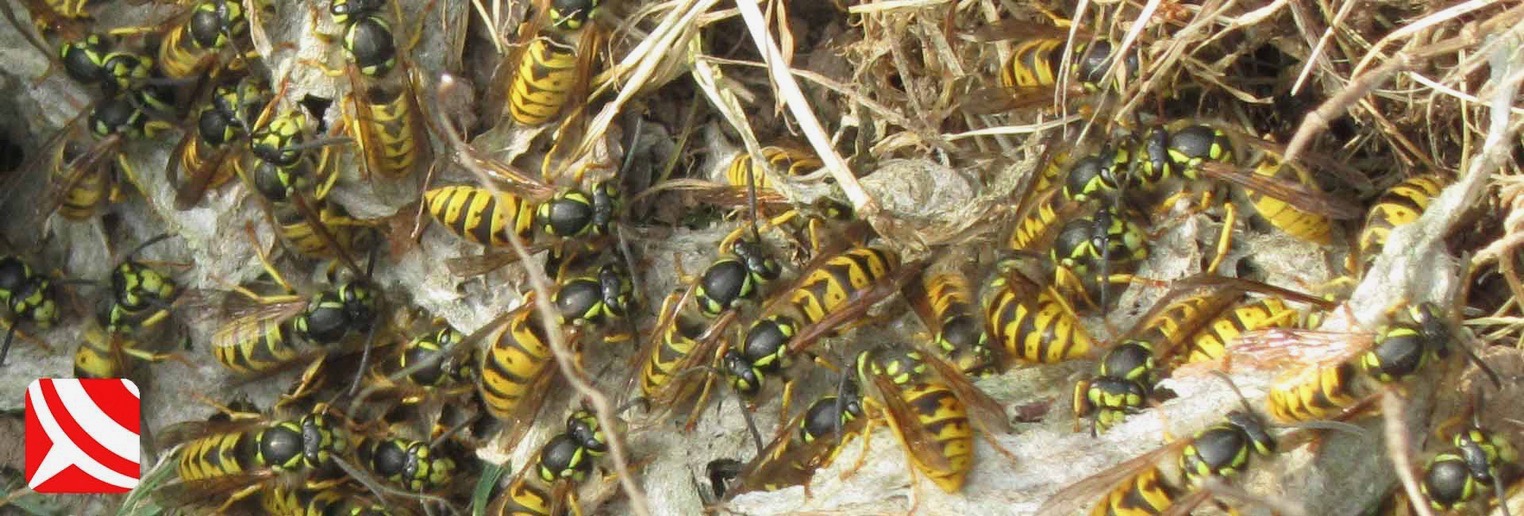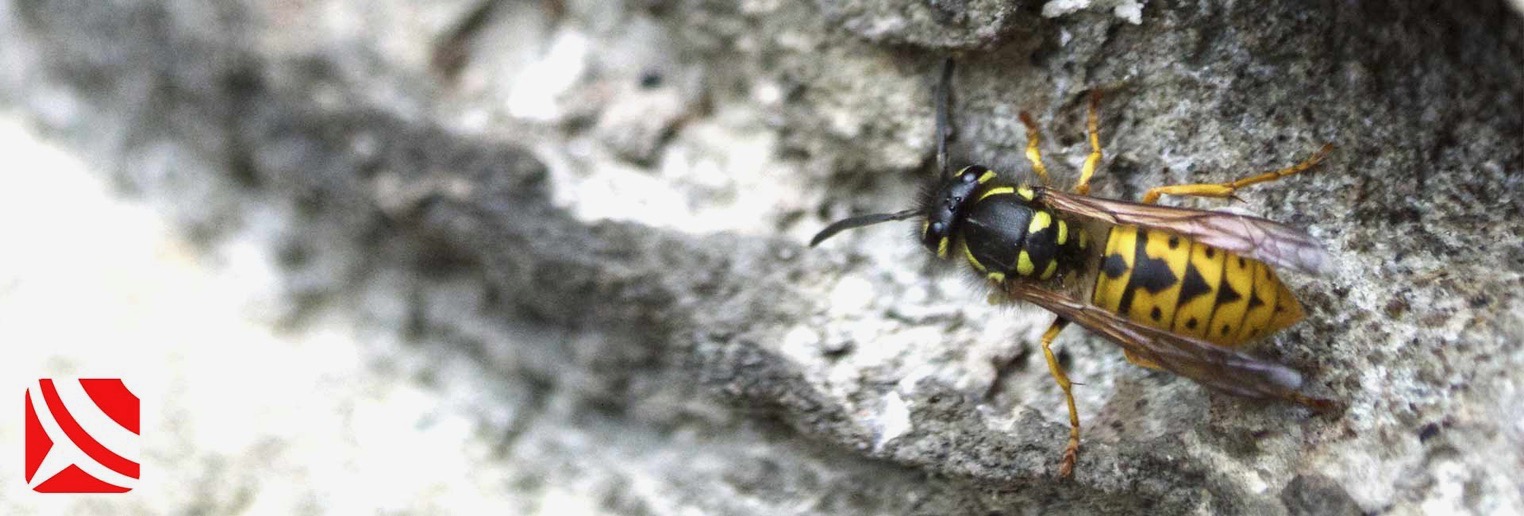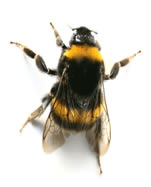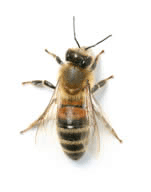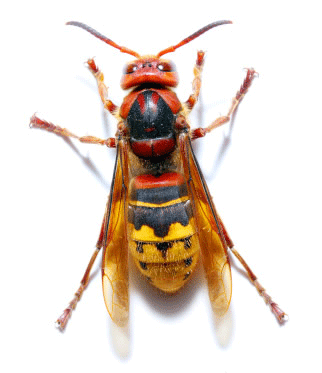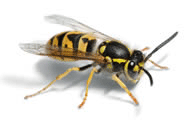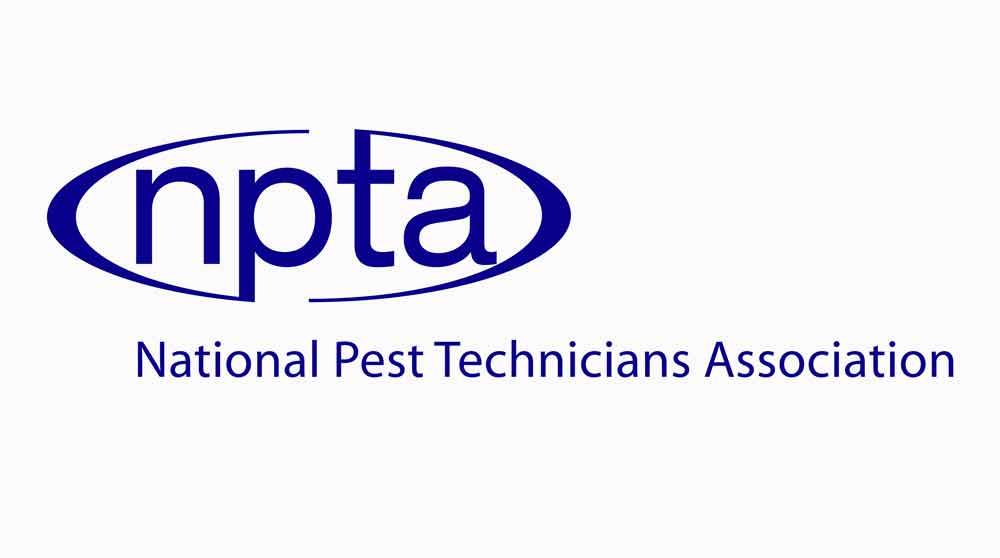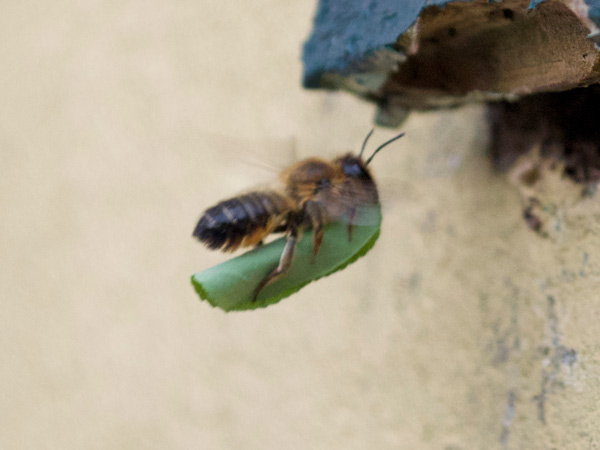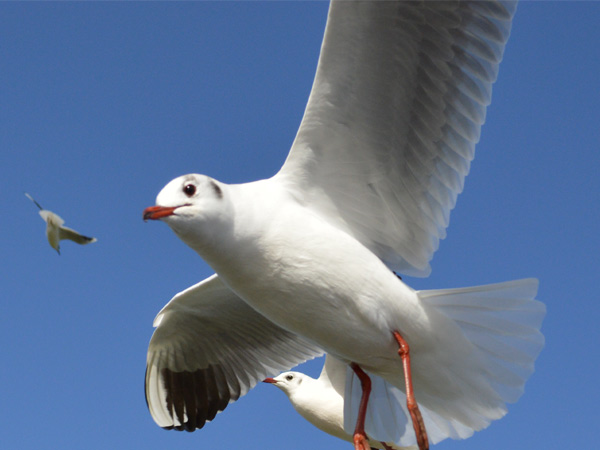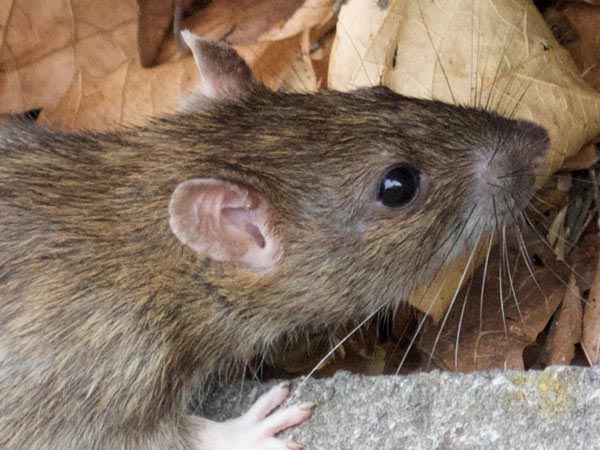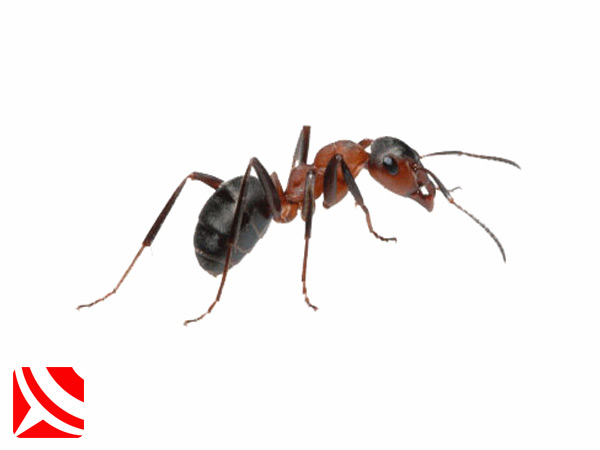Gone Today - Guaranteed!
First is a Bumble Bee then a Honey Bee a Hornet and Finally, a Wasp. It is clear to see the differences between them. If you have wasps, then read on.
Why Are Wasps In Your Lawn?
Wasps are more common in lawns and grassed areas than most people think.
The two species of British wasps most commonly found and best adapted for this kind of nesting environment is the Common Wasp (Vespula vulgaris) and the German or European Wasp (Vespula germanica).
Both these species of wasp are experts at excavating soil from voids in the ground, enabling the nest to grow much, much larger than the original hole would have allowed.Where Do Wasps In Your Garden Lawn Come From?
The holes that wasps populate in lawns start as all wasps nests do, with a single queen. The holes are existing voids in the ground, most commonly created by mammals that include rats, mice, voles, moles and rabbits etc.
Some holes are natural voids within buried walls, rubble and long forgotten tree stumps and root systems.
Is It Safe To Leave Wasps In Your Lawn?
NO! these voids can be huge and can reach the size of a wheelie bin! Last year we had a customer who fell into a nest void on an alotment plot and was swarmed.
Fortunately she didn't react severely to the stings but was stung dozens of times. The only reason she believes she didnt get more badly stung was that this happened late in the evening when it was much cooler and she jumped over a six foot, wooden fence.
Is It Safe To Mow Your Lawn?
NO! This is how many wasps nests in grassed areas and lawns are discovered. Strimmers' are just as provocative.
Once a nest is discovered, try and mark its location clearly so you know where you found it and it is easy for a professional pest controller to locate in your absence and make safe.
How Are Wasps Nests Controlled?
Most nests found in cavities are treated with an insecticidal dust delivered via pressurized equipment to deliver the dust deep into the nest or its surroundings and entry point. The dusts used by professionals are many times stronger than those sold to amateurs!
Aerosols are also used to subdue large numbers of "flying" wasps, especially where they start to swarm. They are a great backup for high risk nests or treatments in confined or sensitive spaces.
Oil based, pesticide sprays are highly effective in subduing nests but run the risk of causing damage to items surrounding the nest so are not that popular professional.
Wasp Killing Foams are commonly used by amateurs and can be great for nests that ARE NOT inside cavities. Covering an accessible nest with foam can work well but it does not subdue the wasps quickly so you might get badly stung!
How Long Does a Wasp treatment Take?
Some nests are treated in minutes, others can take over an hour. The clearer the access, the faster the treatment. Don't get caught up with time! the dusts used professionally rely on the wasps as a vehicle.
The treated wasps take the chemical into the heart of the nest giving a systemic kill. It can take an hour for wasps to return to the nest and a further ten minutes for them to come into contact with the chemical and die. Temperature, wind speed and rain will all take a toll treatment times.
As a rule a pest control operator will average about twenty minutes on site, but the result is what's important, and a safe and effective one at that. All our treatments are usually guaranteed.
What Safety Precautions Should we Take?
Everyone who could be affected should be informed especially those with young children or vulnerable adults in the gardens
all windows and doors should be closed for at least a few hours following treatment. Telling neighbors, especially those with pets and young children is a must, because treated wasps will spiral to the ground.
Wasp control dust can also drop out of treated cavities, especially when treating vertically and this can drift onto neighboring properties, water features and persons etc. So being prepared keeps every one safe and free of accusations and upset.
What Will We See?
Immediately after treatment the wasps returning to the nest will begin to cluster at its entrance. This can cause alarm, but it shouldn't as it's quite normal and if this clustering doesn't happen, chances are the treatment will have failed. Once each wasp is exposed to the chemical, it will die within minutes.
Most of the wasps die off site as they fly away, sometimes completely white, covered in the dust.
What Happens After a Wasps Nest is Treated?
Within an hour of the nest being treated you should expect almost complete cessation of activity. If the wasps seem more active than ever, it might require another treatment.
In colder weather, wasps that hatch from cells in the treated nest might appear in random places around the building and again this is normal. If this problem persists for more that 21 days, chances are the treatment has not worked, but more likely you have another wasp nest!
Can Dead Wasps Still Sting You?
NO! The sting can still pierce the skin, but cannot deliver venom.
Why Don't You Remove Wasp Nests?
Removal of wasps nests removes the very chemical that could prevent future nests developing. The dusts used have a shelf life of three years, so will continue killing for many months at the very least.
Bristol Pest Control ServicesLocal Places And Areas Our Pest Control Service Covers
Bristol - Clevedon - Portishead - St Annes - St Pauls - St George - Sneyd Park - Fishponds - Eastville - Easton - Frenchay - Filton - Westbury - Stoke Bishop - Stoke Park - Southville - Long Ashton - Patchway - Bradley Stoke
